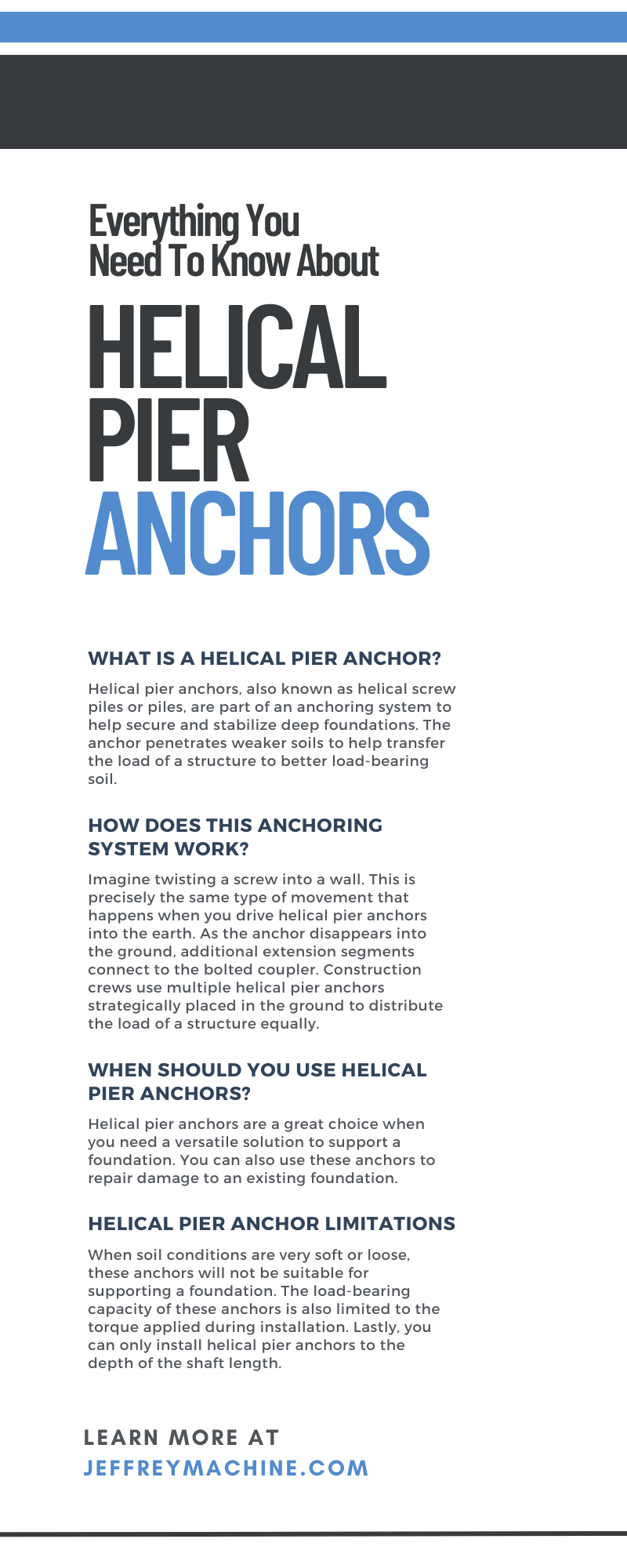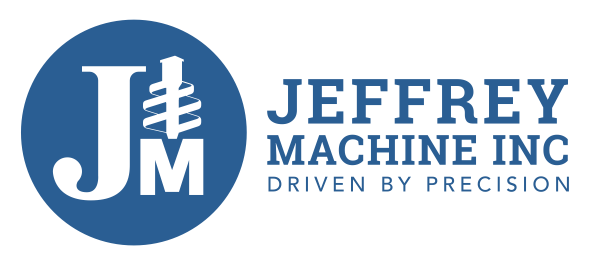Everything You Need To Know About Helical Pier Anchors

One of the most important aspects of building construction is to have a supportive foundation. Without the foundation, you cannot build or support a structure. However, sometimes you may need to support the foundation through an anchor system to help distribute the structure’s weight.
Helical pier anchors are one of the best solutions for foundation support because they are easy to install, and you need minimal labor and equipment to get the job done. Keep reading to learn everything you need to know about helical pier anchors before you consider using them in your construction project.
What Is a Helical Pier Anchor?
Helical pier anchors, also known as helical screw piles or piles, are part of an anchoring system to help secure and stabilize deep foundations. The anchor penetrates weaker soils to help transfer the load of a structure to better load-bearing soil. Essentially, you can increase the structure’s capacity without excavating, which is eco-friendly and cost-effective.
You can use this system for commercial and residential foundations/construction buildings. It’s also a tool used in both existing and new construction projects. Depending on your application, helical pier anchors come in various sizes and weights.
What Do Helical Pier Anchors Look Like?
When you look at a helical pier anchor, it appears as a round shaft that is helix-shaped, resembling a corkscrew. It’s made with galvanized steel to help prevent rusting once the anchor is in the earth. A screw thread gets welded onto the shaft of the helical pier anchor to provide downward force for drilling the tool into the ground.
Typically, these anchors will last 100 years or longer, depending on the soil you place them in, the structure’s load, and the anchor’s use. Again, the anchor's diameter, thickness, length, shape, etc., depends on your project and application.
How Does This Anchoring System Work?
Imagine twisting a screw into a wall. This is precisely the same type of movement that happens when you drive helical pier anchors into the earth. As the anchor disappears into the ground, additional extension segments connect to the bolted coupler. This helps the anchor reach several hundred feet below the earth’s surface. Construction crews use multiple helical pier anchors strategically placed in the ground to distribute the load of a structure equally.
Usually, the pier anchors are enough to support the weight of a structure. However, some construction projects might call for pouring concrete down the sides of the anchor hole. The concrete reinforces the anchor so it’s resistant to uplift forces.
When Should You Use Helical Pier Anchors?
Helical pier anchors are a great choice when you need a versatile solution to support a foundation. You can also use these anchors to repair damage to an existing foundation. Conventional foundation support systems might fail to perform well in adverse soil conditions; plus, these systems aren’t always budget-friendly.
Not only are helical pier anchors versatile, but they’re affordable, easy to install, and work in adverse soil conditions. For residential structures, you can find these anchors used when building an addition to a home or to support decks, garages, porches, etc. For commercial structures, you can find these anchors used to support office buildings, shopping malls, etc. You can also find this system used in constructing wind turbines and cell phone towers.
How To Install These Anchors
Before you begin the installation process, an engineer needs to develop a helical drawing of the project. This ensures you’re using the piles correctly, so it’s an effective application process. Next, you must prepare the worksite so installation goes smoothly. When you’re ready to install the helical pier anchor, have your anchor tools ready to go.
A hydraulic drive motor attaches to a machine to help drive the anchor into the earth. Depending on how deep the load-bearing soil is, you may need several extensions for the anchor to reach the correct depth in the ground.
After setting each anchor, you must review your work to ensure everything is in the correct place. Checking the depth and torque requirements will ensure the helical pier anchor is doing the job it’s supposed to.
The Advantages of Helical Pier Anchors
When it comes to the advantages of helical pier anchors, there are almost too many to count. Let’s briefly go over how these anchors can benefit your construction project.
Speedy Installation
Installing conventional concrete piles to support a foundation could take several days to construct because the concrete needs to settle. Helical pier anchors often take less than a day to install and do not require additional heavy machinery. Installing this foundation support system is quick and efficient.
Minimal Disturbances
During the installation process, there will be minimal disturbance to the ground. This means there isn’t much noise or vibration occurring throughout the process. Install these anchors with minimal disruption to nearby businesses or residential homes.
Easily Removable
They are easily removable if you install the anchor incorrectly or need to replace one. Whenever it’s necessary to remove an anchor from the ground, you can do so with helical pier anchors.
Easy Access
Because you don’t need heavy equipment to install these anchors, you can easily access remote areas or locations with minimal mobilization. Additionally, you can install the anchor from the exterior of the building. You will not need to move equipment inside a structure to install the anchor.
Helical Pier Anchor Limitations
While there are several advantages to helical pier anchors, they still have limitations. When soil conditions are very soft or loose, these anchors will not be suitable for supporting a foundation. The load-bearing capacity of these anchors is also limited to the torque applied during installation. Lastly, you can only install helical pier anchors to the depth of the shaft length. You will need a longer shaft if you plan on installing an anchor deeper into the earth.
It’s essential to know everything about helical pier anchors before installing them to ensure you’re using the right foundation support system. Take advantage of these anchors to help support construction projects with deep foundations. Remember the benefits and limitations of helical pier anchors to determine if they are appropriate for your project.

